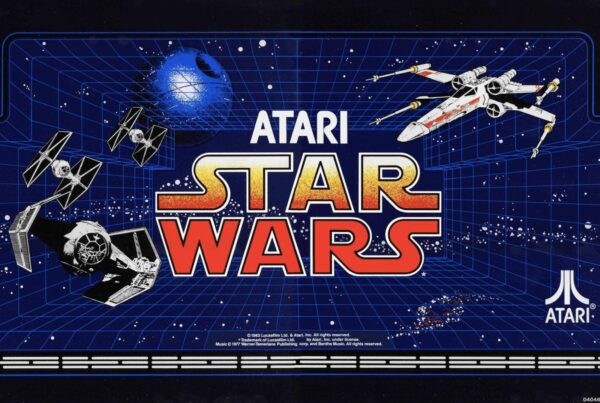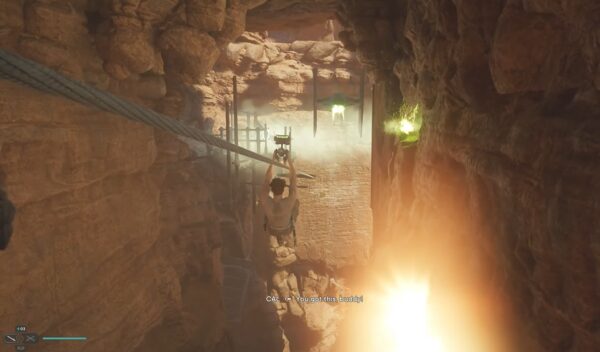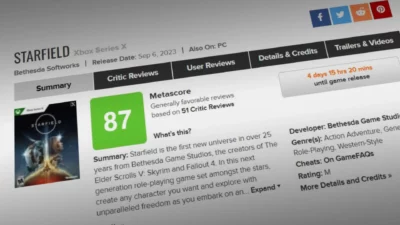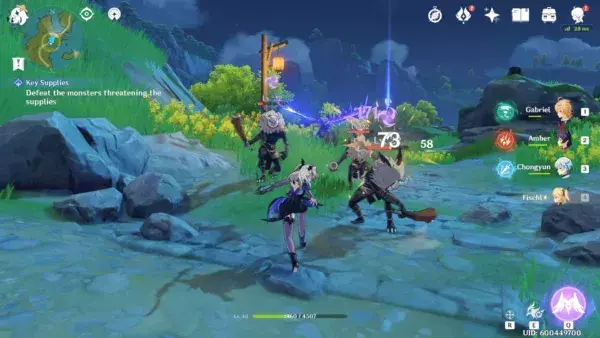
Nele Steenput from nDreams talks indie meetups, self-confidence, VR challenges, and how to become a senior character artist…
Nele Steenput is a British-based senior character artist who’s repetoire includes The Bradwell Conspiracy, Spaceteam VR, Tin Hearts and the recently announced Ghostbusters VR for the Meta Quest 2. Here she offers career advice, the importance of indie meetups, and the path that led her to working at developer nDreams.
Can you remember the game that first made you want to get into games?
It wasn’t so much a particular game, more the people and the projects. I worked in the VFX industry initially and didn’t realise a career in games was a thing until I met a bunch of lovely indie game devs. I was really drawn to their passion, creativity, and the diversity of the projects they worked on – it really spoke to me. Narrative games, though, are my favourite. I love working on them as a character artist.
How did you break into the industry?
[At first] I worked in the VFX industry but was more drawn to games, so I did everything I could to find out how I too could get a job in games. A portfolio tailored to working in VFX [film/TV/animation] is different than one for game development, after all. It wasn’t as obvious then as it is nowadays – we didn’t have career talks or mentorships, or even YouTube videos explaining the workflow from start to finish. Instead, I got books, magazines, and scoured forums on what was required from me to be able to get that job in games.
I went to a lot of events, small indie dev meetups to try and get to know other game devs while working on my portfolio in my spare time. Eventually it paid off. I got recommended by a friend to someone else and got that first job at a small indie studio making a lovely game with a few other very talented people!
What was the first game you worked on professionally?
The Bradwell Conspiracy, and I am definitely still proud of it. The team was incredible; even though I was one of the least experienced people on the team, they were all so welcoming and helpful. I learned a lot, not just about character art, but narrative design, game design, art directing… because it was such a small team; we got to discuss things cross-discipline and follow everything up-close.

It’s not just human characters that needed to be designed from the ground up for Spaceteam VR, but quirky aliens, too.
What’s the chief responsibility of a character artist, and how do you achieve it?
Even after I got that first job in games, I didn’t stop learning in my spare time to become a better character artist. The journey doesn’t stop at finding that first job. A character artist has so much to learn – that takes years of continuous development. You’d often find me working on personal projects, studying anatomy, art styles, cloth, or even technical skills, such as better ways to do retopology or UV unwrapping. Getting to know game engines and rendering your work in them is a big plus, too, to show that you understand the workflow of a character artist.
Does working in VR bring an added challenge that traditional games don’t?
Players perceive characters in VR slightly differently than they would in more traditional games. This can range from feeling more connected to the NPCs, to being scared of a slightly too tall enemy character standing right in front of you, to seeing your friends waving at you and acting silly while ‘embodying’ a purple alien creature in multiplayer VR.
Technical challenges are relating to the unique nature of game design in VR compared to flat-screen games, as well as VR games needing to run at consistent high frame rates. Handheld headsets such as the [Oculus] Quest run on a mobile processor, which means the technical budget is even lower than for PC or PSVR games.
What’s a mistake you once made, but ultimately learned from?
When I was just starting out, I made the mistake of not sharing my artwork anywhere online or with friends. I didn’t know any other character artists, so I had no one really to learn from. Getting feedback on your artwork is essential to growing as an artist – I was more creating artwork within my own bubble and not [feeling] proud of what I’d make. I always felt protective about my work because I never felt like it was good enough. I should have accepted that I was trying to learn just as much as anybody else and that everyone starts where I was. I should have reached out to other artists more, posted more on social media or on forums, and kept at it.

The Bradwell Conspiracy offered Nele an opportunity to learn across disciplines such as narrative and game design, due to working with a small team.
What’s one piece of advice you would offer to your younger self?
Focus more on one style to start with. [Start with] smaller projects, and focus on finishing those. Doing large projects right from the start can be so overwhelming and make you give up halfway through, whereas finishing smaller projects will give you a boost in self-confidence and [you can see] where things went wrong and how you can improve. It also means you have an extra piece of artwork to add to your portfolio.
Slowly expand scope once you have more confidence in your skills, and aim at getting faster. An example of a smaller project can be making a portrait instead of a full-body character. Character artists have a huge pipeline to get used to, which includes different separate skills, and going through the whole process can take a while.
Would you say it’s easier than ever to work in games, or more challenging?
I think it’s easier than ever. There’s so much accurate information out there right now for free, or to fit within a student budget, and also mentorships. Also, being able to learn from professionals is a big plus. It has become more challenging in the sense that, especially for character artists, there are so many new techniques to get used to, more software to learn, and the bar for the quality of characters has risen significantly as well.
If somebody is thinking about a career in games, what’s something they can do now to help their future chances?
Inform yourself as much as you can, go to events, local game dev meetups, try things at home in your spare time. Attend talks, get to know people within the industry and make friends. As a character artist, go to life drawing, practise your anatomy skills, and practice often in small chunks of time rather than once in a while for a big chunk of time





